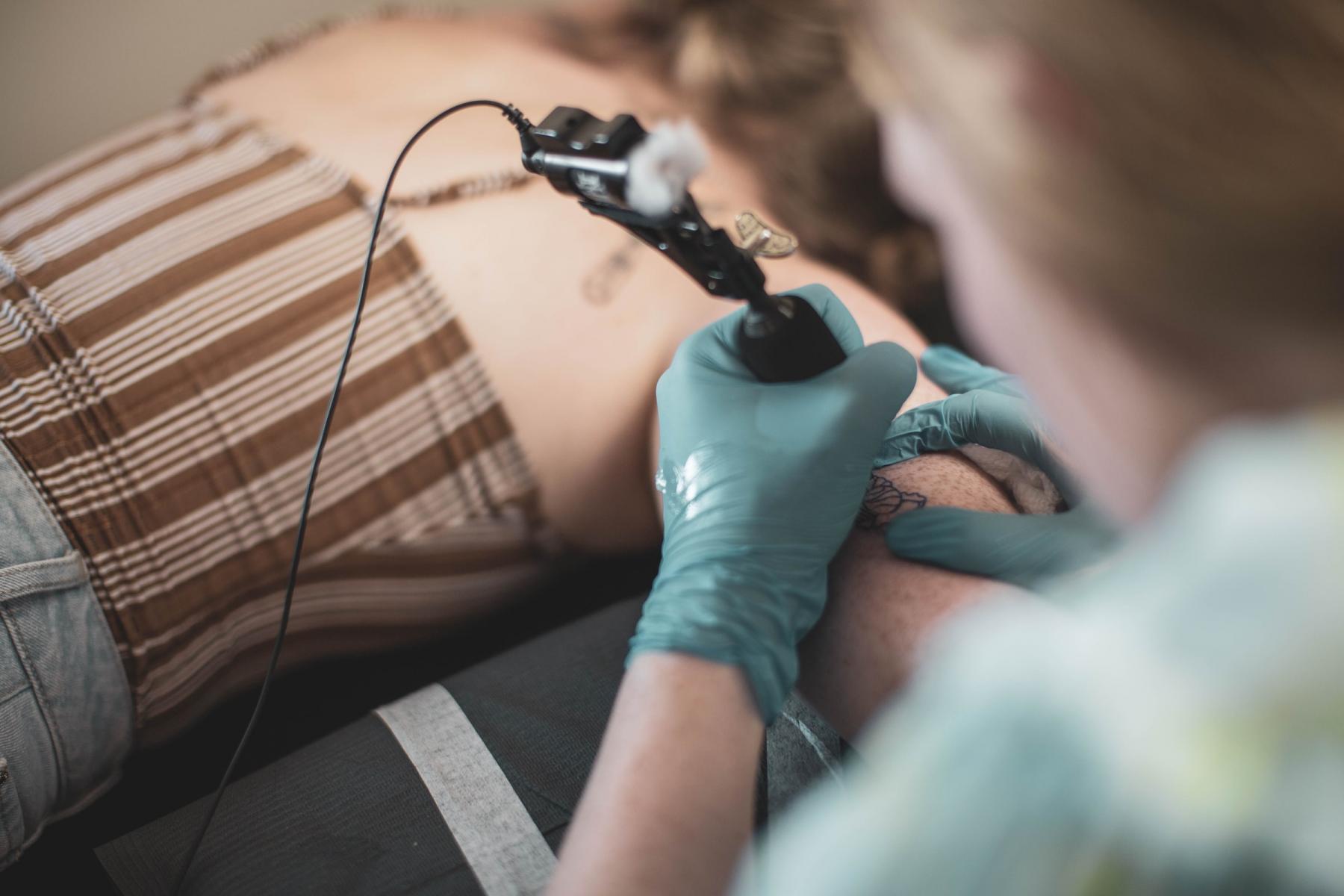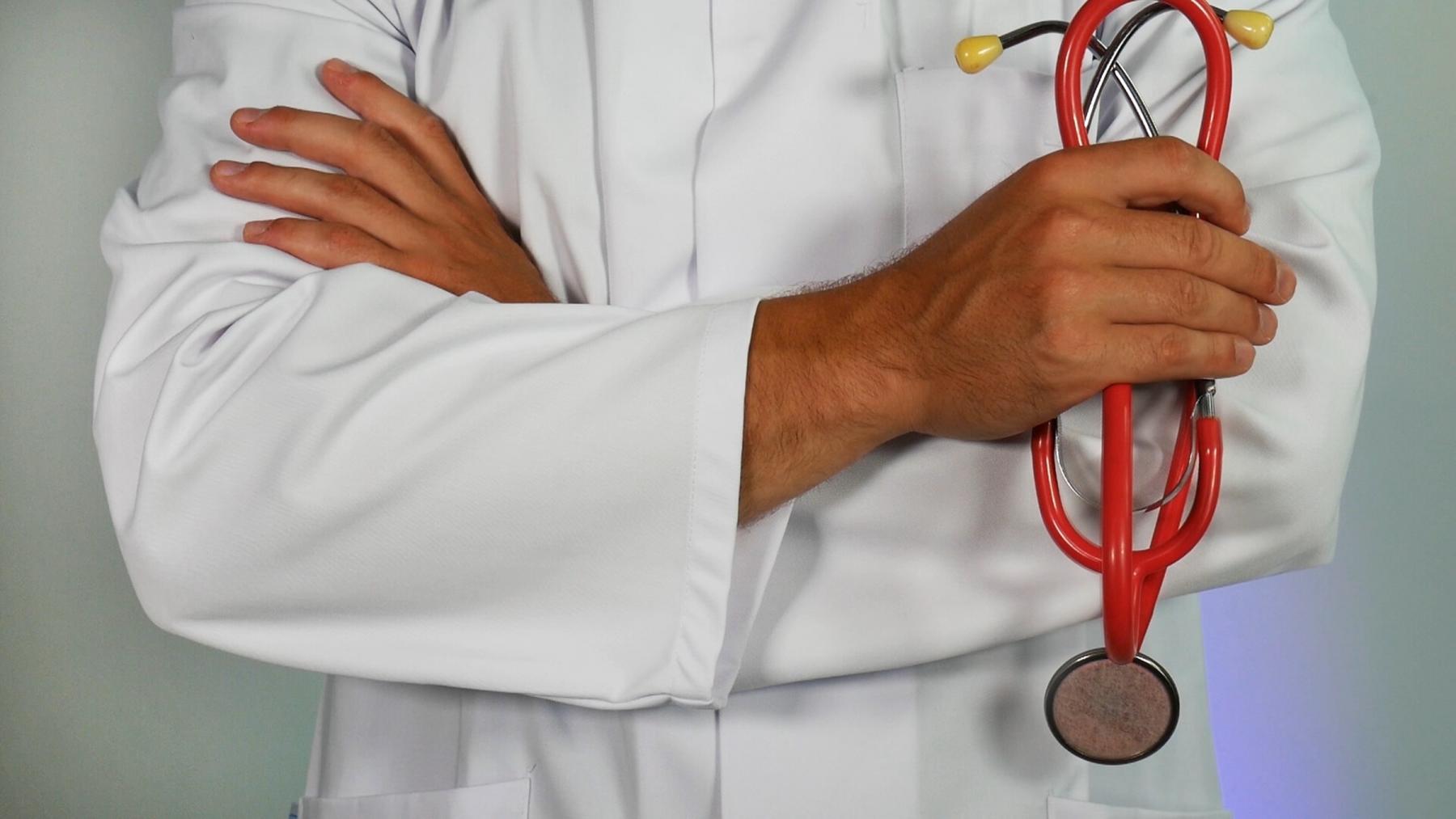
- 1. Why Can Tattoos Get Infected?
- 2. Signs of a Tattoo Infection
- 3. Tattoo Infection: What to Do about It
- 4. How to Prevent Tattoo Infections
A tattoo infection is a rare occurrence if a tattoo is performed by an experienced tattoo artist who keeps a sterile environment. Still, sometimes tattoos get infected. Why can it happen? What to do about it? We have asked experts and are ready to share the answers with you.
Why Can Tattoos Get Infected?
A tattoo infection is in most cases a result of someone’s mistake.
A tattooist’s mistake. If a tattoo artist neglects the hygiene standards, your tattoo can get infected after the procedure. The use of low-quality ink and dirty water can also provoke inflammation in the wound.
A client’s mistake. An infection is often the client’s mistake if they did not follow the aftercare rules while the tattoo was healing. Such a reaction can also be provoked by diseases the client forgot to mention to their tattooist beforehand. Any weakening of the immune system slows down skin regeneration and hinders attempts to treat the infection if it occurs.
A body’s mistake. Sometimes, a tattoo infection is caused by an allergic reaction to certain components of the ink. These reactions are rare and are most common with red and green pigments.

Signs of a Tattoo Infection
Doing a tattoo is causing physical damage to the skin, so a tattoo artist must keep the environment sterile during the process. Otherwise, there’s an increased risk of infection of the damaged tissue, which manifests itself in the form of certain symptoms. How do you know that your tattoo is not healing right?
Symptoms of a tattoo infection:
- non-healing ulcers
- oozing pus with an unpleasant smell
- reddening
- fever
- acute pain.
As the infection keeps spreading, these signs become more pronounced, which calls for a visit to a doctor and urgent treatment.
Let’s dive deeper into what symptoms are normal and what should alarm you.
Swelling
A tattooist does a tattoo with a special machine. The process damages the skin, so it’s normal for the skin around the wound to be swollen for the first 1-2 days. To reduce swelling, you can ice this area or apply a thin layer of cream containing dexpanthenol your tattoo artist recommended.
However, if the swelling does not subside after 2-3 days or the swollen area keeps growing and you develop new symptoms (acute pain, fever) — this can be a sign of complications that call for medical attention.
Fever
In the first couple of days after getting a tattoo, this area can be hot to the touch. This is a normal reaction of the immune system to an injury. Increased temperature in this area does not affect your health in general and is only slightly unpleasant.
However, if you’re running a fever, it’s a reason to worry. This indicates a bacterial infection. This can be accompanied by nausea, body aches, and feeling unwell in general.

Discharge
After getting a fresh tattoo, you may notice lymph discharges in the area of the tattoo. It’s normal, lymph protects your body from harmful microorganisms after injuries and helps heal damaged tissues. On the first day, lymph may ooze out with particles of ink, which is also normal. Later, if the healing process is going well, the lymph should be transparent, without an unpleasant smell or impurities. The yellowish or greenish color of the discharge from the injury may be a sign of an infection
Smell
An unpleasant smell and oozing pus speak of a serious infectious process and the development of dangerous complications, including sepsis.
Pain
After getting a tattoo, you may feel a dull pain in that area. Normally, in 2-3 days, the pain subsides on its own and does not require special treatment. Acute pain, however, that only gets worse, is a sure sign of inflammation.
Reddening
Unhealthy reddening around the tattoo speaks of a skin infection. If you notice thin red lines running from the tattoo, it may be a sign of sepsis.

Enlarged pustules
If the inflammation gets worse, pus discharge increases, due to which pustules around the wound get larger and get covered in yellowish-greenish scabs.
Feverish State and Apathy
Shaking, fever, apathy, and sleepiness are symptoms of serious infectious complications. Most likely, you’re developing a toxic shock syndrome that will only make things worse. If you’re running a temperature of 38°C, you might have sepsis. If you can’t reduce your temperature, call the doctor and get treatment immediately.
Important! If you notice signs of inflammation of the tattoo under the bandage that the tattooist wraps around the wound right after the procedure, remove it and turn to a doctor. In case of an infection, this bandage only creates a greenhouse effect, aggravating the inflammation.
Tattoo Infection: What to Do about It
The first thing you need to do if you suspect an infection is to turn to a doctor who will prescribe the necessary treatment.

Here are some aftercare tips we want to remind you about.
- Before treating your injury, thoroughly wash your hands and wipe them dry with a paper towel.
- When you’re washing the ulcers with an antibacterial solution, make sure that you wash out as much pus and discharge as you can.
- Next, dry the wound with a soft, clean piece of napless fabric or with a disposable paper towel.
- Don’t disturb the injury and peel away scabs or scratch the itching areas. This will lead to scarring or even complications.
- Use antibacterial or wound-healing ointments, making sure you follow your doctor’s instructions.
- Keep the inflamed area dry.
- Wear loose clothes that won’t touch or rub against the tattoo.
- Keep your tattoo away from direct sunlight until it’s fully healed.
How to Prevent Tattoo Infections
Perhaps, the most important step in preventing any complications with your tattoo is the choice of a tattoo salon and artist. Make sure they have a lot of experience, an established reputation, and good reviews. When you come to the parlor for the first time, look at the state of the rooms, at the workplace of the artist and their actions. Do they put on gloves? Do they use sterile tools and disinfect the surfaces?

The next important step in preventing tattoo infections is proper aftercare in the first hours and days.
Here are a few dos and don’ts:
- Take the bandage off the tattoo only after waiting for the period of time your artist recommended.
- Gently wash the tattoo with soap and water, without rubbing it.
- Pat it dry with a disposable paper towel.
- Apply the wound-healing ointment your tattooist recommended.
- Don’t go to a gym or sauna and don’t let chlorinated or salt water come in contact with your skin for two weeks.
- Don’t expose your skin to direct sunlight (in a tanning salon or outside) for 4-5 weeks.
- Always wear sunscreen with at least 50 SPF when outside.
- Don’t apply any perfumed makeup or skincare products to the tattoo and the area around it.
- Wear loose clothes that don’t touch the healing area.
- Don’t scratch the tattoo or peel off scabs, or you’ll end up with scars. If itching is unbearable, pat the tattoo or gently rub the skin around it.
Now you know what symptoms indicate a tattoo infection and what you can do to avoid complications after getting inked. Check out our gallery of tattoo artists’ works, find inspiration for your perfect design, and enjoy your tattoo!


















to leave a comment
Log in